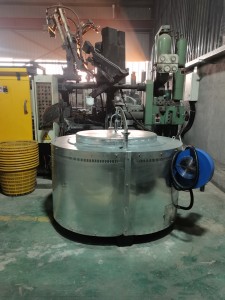
High-frequency resonance electromagnetic induction furnace, as a leader in the field of metal melting and heat treatment, is undergoing a technological revolution, showing unique advantages compared with traditional gas furnaces, pellet furnaces and resistance furnaces. With the continuous advancement of technology and the growth of global industrial demand, electromagnetic induction melting furnaces are becoming more innovative and environmentally friendly. This report will discuss the development trends of high-frequency resonance electromagnetic induction furnaces and analyze their comparison with other furnaces.
High frequency resonance electromagnetic induction stove vs. traditional gas stove:
Traditional gas furnaces typically rely on burning fossil fuels, such as natural gas or liquefied petroleum gas, to produce heat. This approach leads to a decrease in energy efficiency because energy is wasted due to exhaust gases and thermal radiation produced during the combustion process. In addition, gas furnaces have high maintenance costs in high temperatures and corrosive environments, and burners and other key components require regular replacement and repair.
High frequency resonance electromagnetic induction furnace vs. resistance furnace:
Resistance furnaces typically use resistance heating and are relatively energy-inefficient. Resistive heating will cause a part of the electrical energy to be converted into non-thermal energy, such as resistive heat and radiant heat, which reduces the effective use of thermal energy. In contrast, high-frequency resonance electromagnetic induction furnaces achieve efficient metal heating through the principle of electromagnetic induction, with almost no energy waste.
Development trend:
In the future, high-frequency resonance electromagnetic induction furnaces will continue to flourish, and more and more innovations and improvements will lead their development direction. Here are some future trends:
1. Energy efficiency and environmental protection: Electromagnetic induction melting furnaces will pay more attention to energy efficiency and environmental protection. Reducing energy consumption and air emissions will be the main goals. The implementation of more efficient heating technologies, exhaust gas treatment and recirculation systems will reduce adverse environmental impacts.
2. Automation and intelligence: The continuous development of automation and intelligence technology will make the electromagnetic induction melting furnace more intelligent. Through sensors, data analysis and automated control systems, operators can more easily monitor and control furnace operations, improving production efficiency and reducing operational risks.
3. Personalized production: The electromagnetic induction melting furnace will support more personalized production needs, such as time control, automatic temperature control and automatic power adjustment. This will help meet customer needs for specific material specifications, promoting innovation and customer satisfaction.
4. Low maintenance costs in the later period: Since the direct heating method causes less damage to the crucible, the electromagnetic induction melting furnace will reduce maintenance costs and extend the service life of the crucible.
High-frequency resonance electromagnetic induction furnaces are increasingly becoming the future trend in the field of metal melting and heat treatment, and their comparison with traditional furnaces shows obvious advantages. As technology continues to advance, we are confident that this field will continue to drive technological innovation and meet growing industrial needs while focusing on environmental protection and energy efficiency.
Post time: Nov-02-2023
